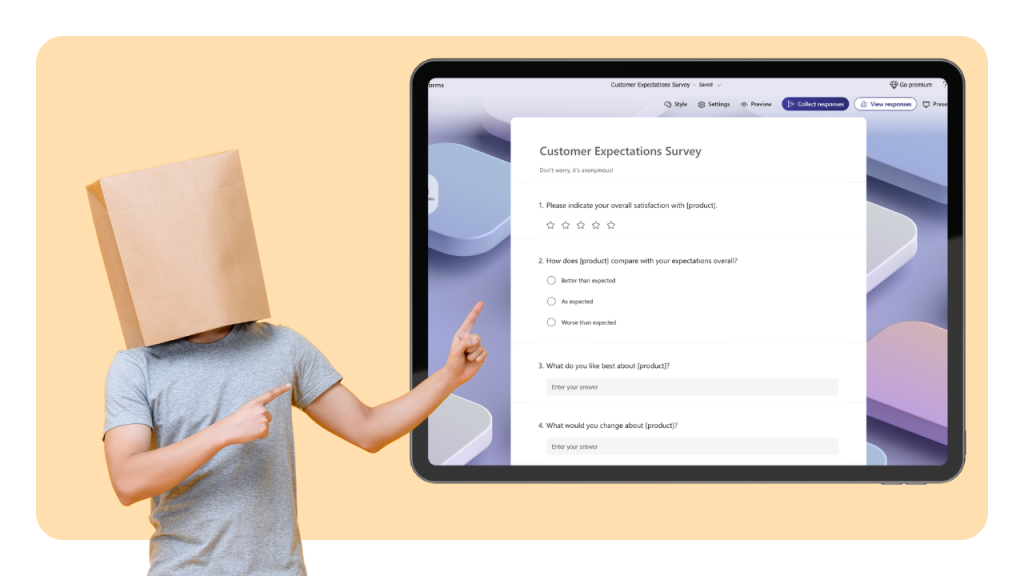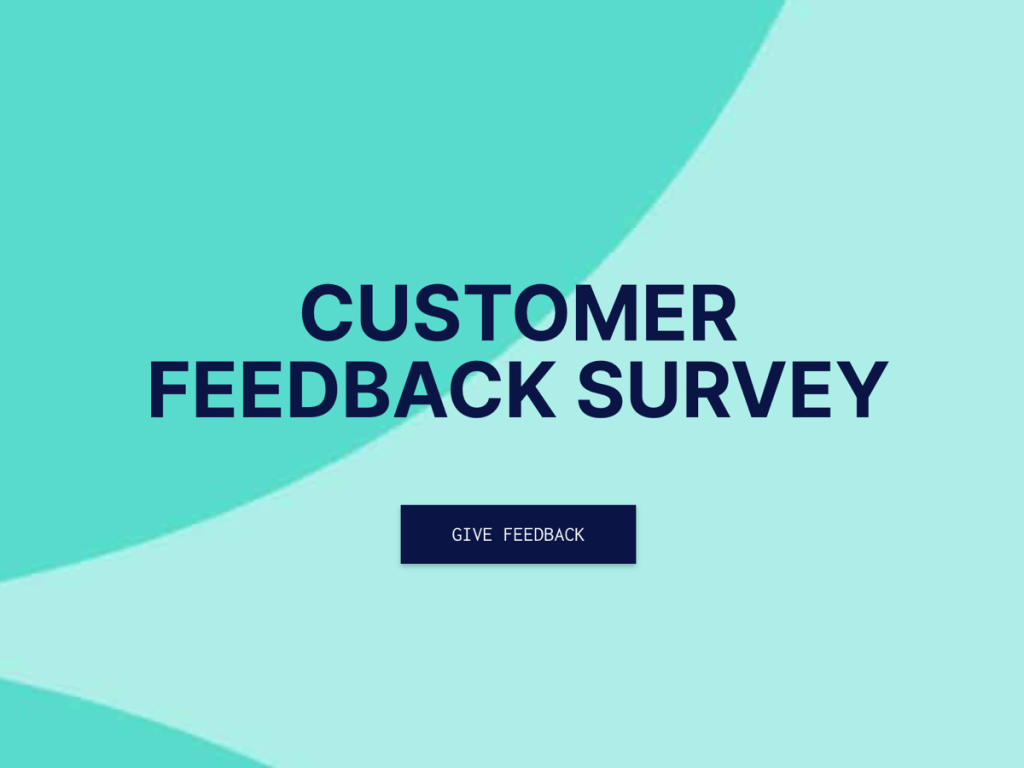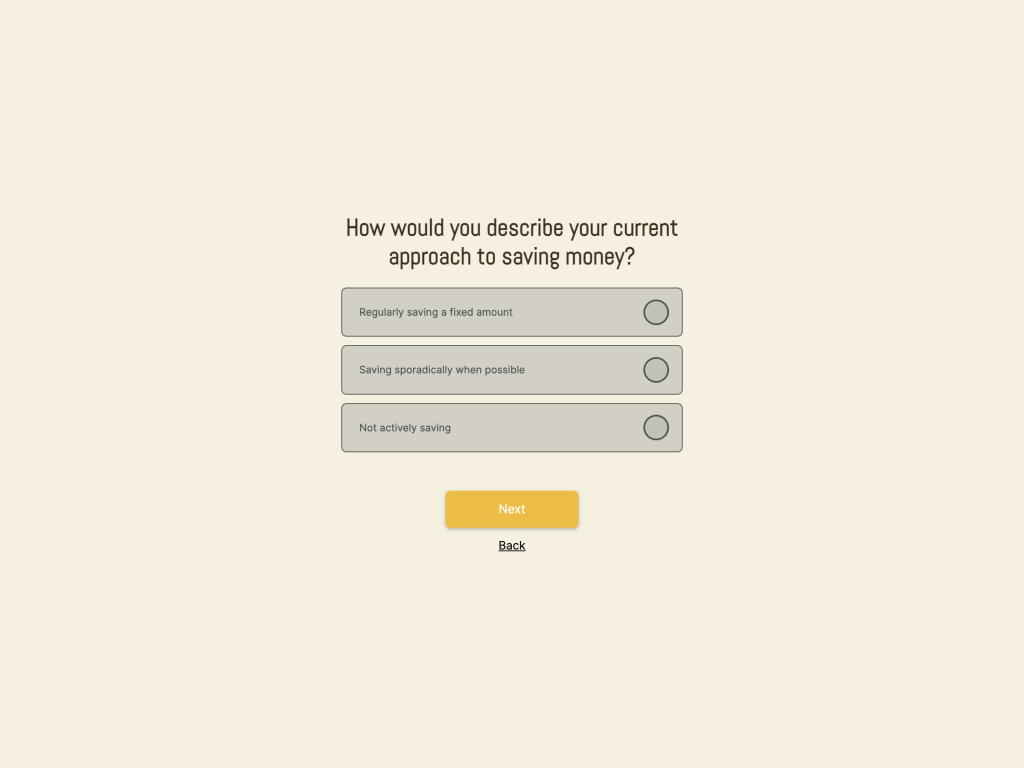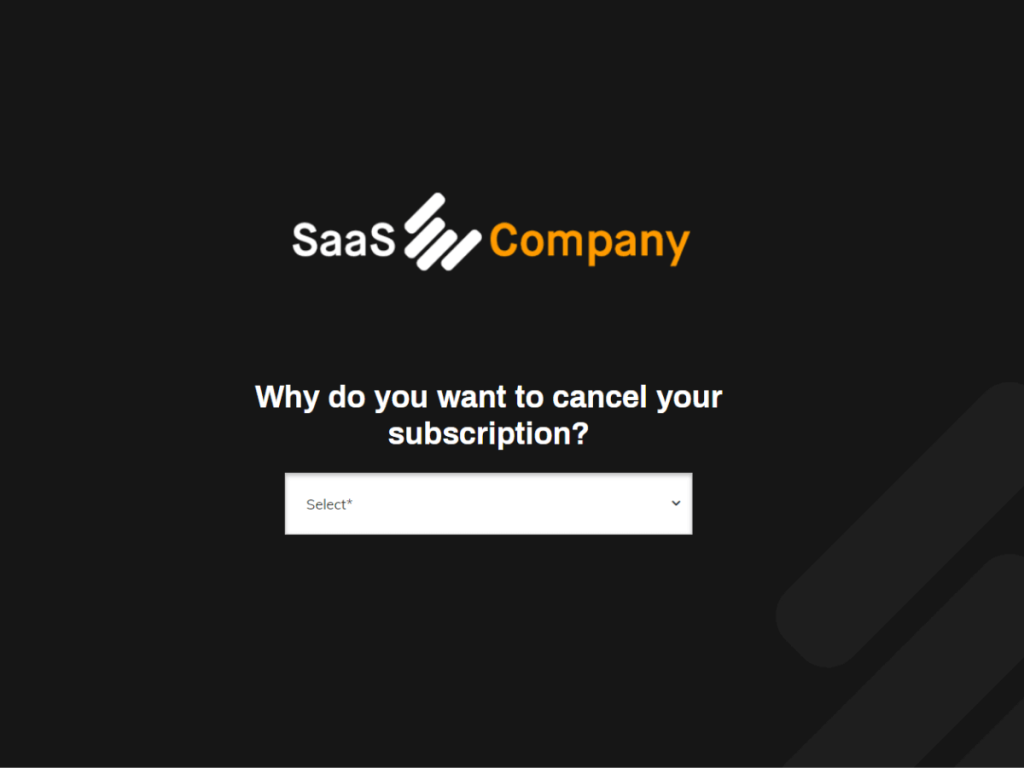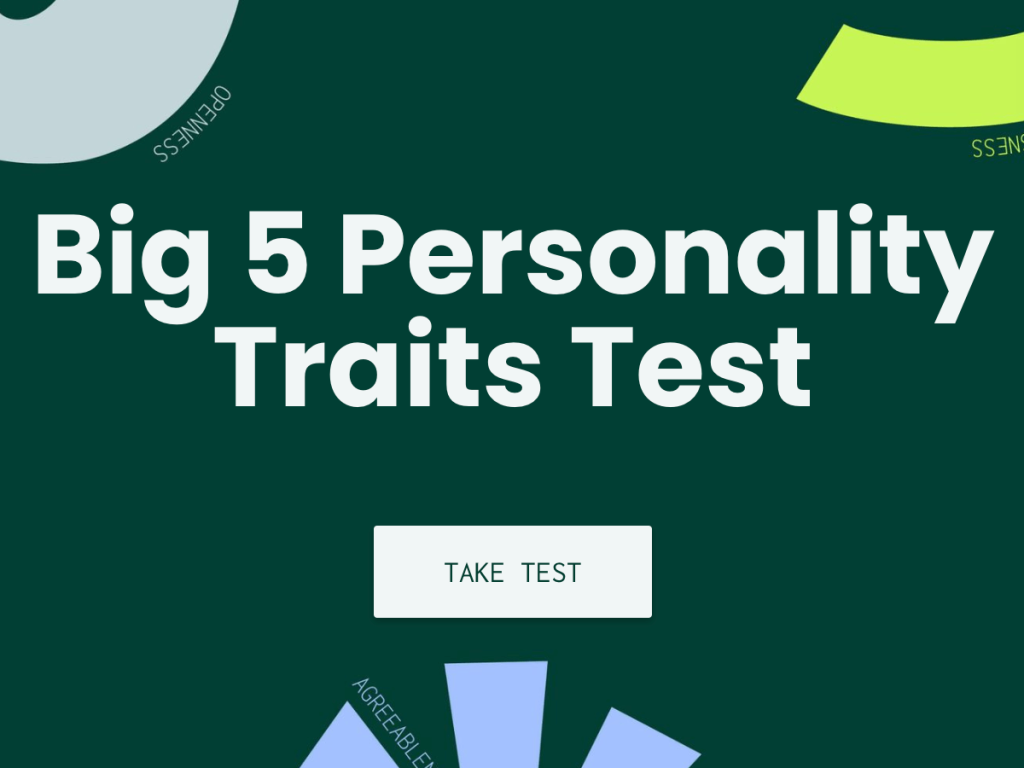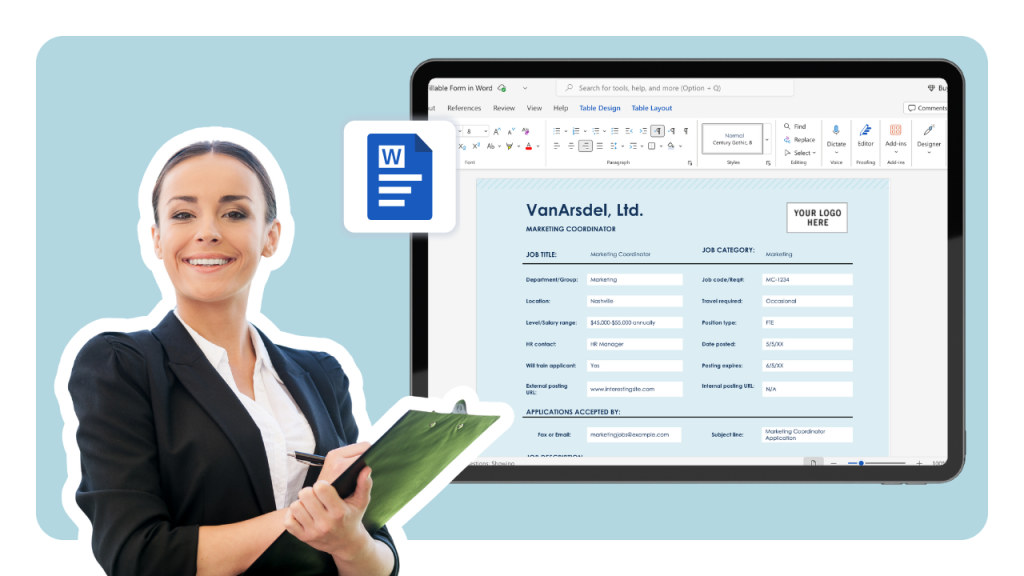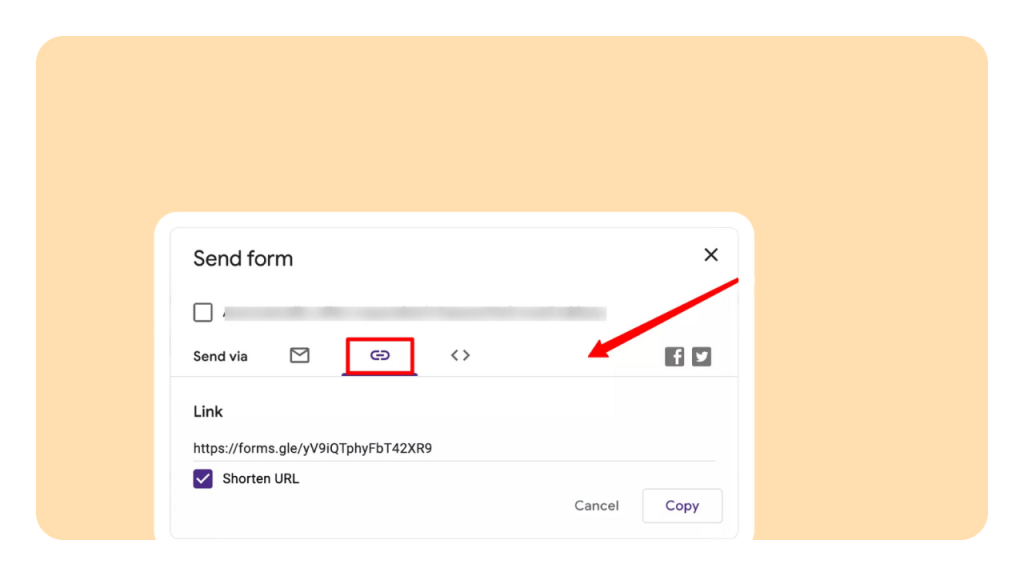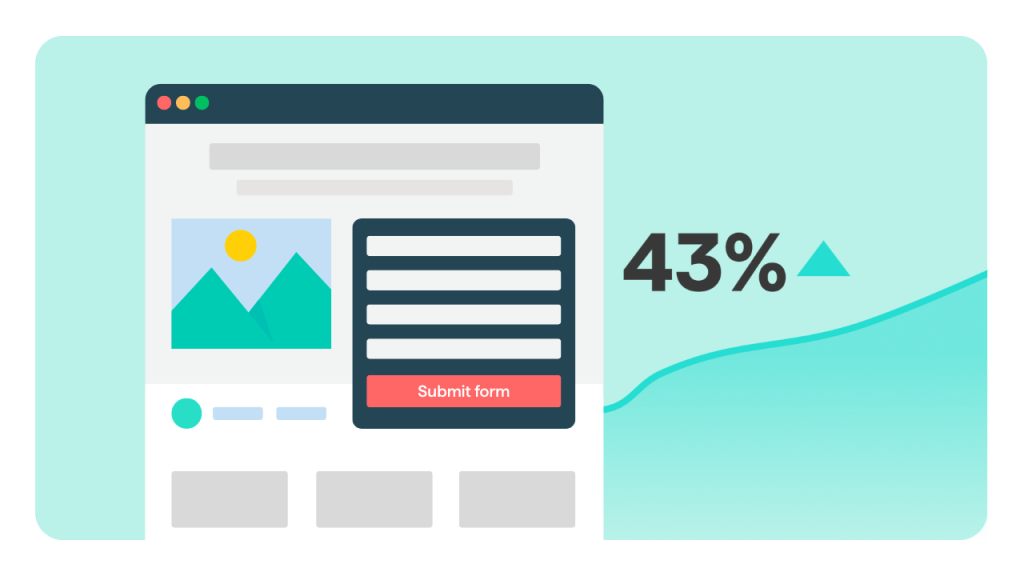Anonymous surveys are necessary in gathering honest and unfiltered feedback, which helps in effective decision-making in any organization, community, or research environment. They help protect the privacy of respondents, ensuring that the feedback remains focused on the content rather than the contributor. Using an anonymous form is essential for building trust with respondents, as it assures them that their identities are protected. This anonymity encourages more open and truthful responses, which can lead to more accurate and actionable insights.
This article explores the steps involved in creating an anonymous survey using Google Forms, and also discusses how involve.me is the best alternative for those needing advanced features. Anonymous forms are commonly used in surveys and research to encourage honest feedback and protect respondent privacy.
Still using Google Forms? There is a better way!
involve.me is a powerful no-code solution to build multi-step surveys that integrate form, quiz and calculator elements
What is an Anonymous Survey?
An anonymous survey is a data collection tool designed to gather feedback without recording identifiable information about the respondents. This ensures that the responses cannot be traced back to the respondents, safeguarding their privacy and protecting identities, and ensuring anonymity to encourage sincerity in their responses.
The importance of anonymous surveys is evident across various domains:
In businesses, they are used to collect honest employee feedback about the workplace, management, and overall job satisfaction without fear of repercussion.
In educational settings, students can provide candid feedback on courses and instructors, promoting a more open environment for improvements.
Healthcare professionals use them for sensitive topics where patient confidentiality and protecting identities is paramount, ensuring that the data collected is both reliable and ethical.
Unlike a non anonymous survey, anonymous surveys do not collect information that could reveal respondents' identities.
Benefits of Anonymous Surveys
Let's talk about anonymous surveys! You've probably heard how powerful they can be for collecting candid feedback, but what exactly makes them so effective? How do they actually work to get you those valuable insights from participants that you're after?
When you guarantee anonymity, people become way more likely to share their honest opinions and true feelings - and that leads to much more accurate and actionable data.
This safe space you create encourages your participants to answer questions openly, without any fear of judgment or negative consequences, which is especially crucial when you're dealing with sensitive topics.
And here's the reality - by removing identifying information, anonymous surveys help you reduce bias and that pesky pressure people feel to provide socially desirable answers.
This results in more genuine responses and gives you a much clearer understanding of what participants are really thinking and experiencing. Plus, the promise of anonymity can seriously boost your participation rates! Why? Because individuals are simply more willing to engage with a survey when they know their identity is protected.
So stick with me here - anonymous surveys ultimately create an environment where participants feel comfortable sharing their real opinions.
This leads to more reliable feedback and enables better decision-making for organizations, educators, and researchers alike. "The key to getting honest feedback is creating a space where people feel safe to express their true thoughts without fear of repercussions." That's exactly what anonymous surveys deliver!
Limitations of Anonymous Surveys
You've probably used them before, and while they offer some significant advantages, there are also some important limitations you need to consider. One key challenge that really stands out? The lack of accountability—and here's the thing: since responses aren't linked to any identifying information, participants may feel freer to provide false or misleading answers. This can sometimes impact the reliability of the data you're collecting, which is definitely something to keep in mind!
Another limitation that catches many people off guard is the inability to follow up with individual respondents. And the reality is, because anonymous surveys don't collect identity or contact details, it's impossible to clarify responses or gather additional information from participants after the survey is completed. This can be a real drawback when you need more context or detailed feedback to make sense of what you've gathered.
Plus, anonymous surveys may not be suitable for every situation you encounter. In cases where identifying information is necessary for analysis or where participants need to be held accountable for their responses, a non-anonymous approach may be more appropriate. So stick with me here—it's important to weigh these factors when deciding whether to use an anonymous survey for your data collection needs! Five Easy Steps to Create an Anonymous Google Survey
Creating an anonymous Google survey is a straightforward process. To make Google Forms anonymous, follow these five easy steps, starting with creating a new form:
1. Access Google Forms
To start, navigate to Google Forms. You can do this by visiting the Google Forms website directly, or accessing it through the Google Apps menu found in the top right corner of any Google page (the grid icon). Once there, you can either select a blank form or choose from various templates. For an anonymous survey, starting with a blank form is often best, as it allows you to ensure no preset settings collect personal information.
When creating your new form, consider the question types you plan to use, as some question types may impact respondent anonymity by potentially collecting sensitive or identifying information.
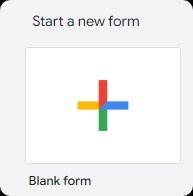
2. Design the Anonymous Google Survey
As a user designing your survey begin by formulating clear, concise, and unbiased questions. Ensure your questions are straightforward and avoid using leading or loaded questions that could skew the results. Keep the language simple to ensure that all respondents understand the questions the same way. Allowing respondents to share their thoughts freely leads to more honest feedback. To design a good survey, consider the following:
Use a mix of closed-ended (e.g., multiple choice, checkboxes) and open-ended questions where necessary.
Ensure the flow of questions appears logical and smooth to keep respondents engaged, and design the survey so that individual responses remain unlinked to specific users.
Include instructions or explanations for complex questions to avoid any confusion.
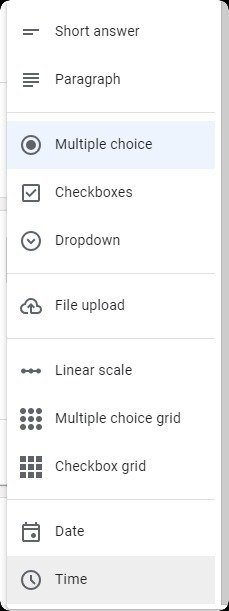
3. Adjust Settings for Anonymity
To ensure the anonymity of your survey and make your Google Forms anonymous:
Go to the settings gear icon in the top right corner of your Google Form.
In the settings tab, under the '‘Responses' section, uncheck the box that says “Collect email addresses” to disable email collection and ensure anonymity.
Also, uncheck “Require [domain] sign-in to view this form.”
In the settings tab, you can also disable response receipts and adjust the 'Limit to 1 response' setting. Disabling the 'limit to 1 response' option helps maintain anonymity, as enabling it may require respondents to sign in, which can link their identity to their response.
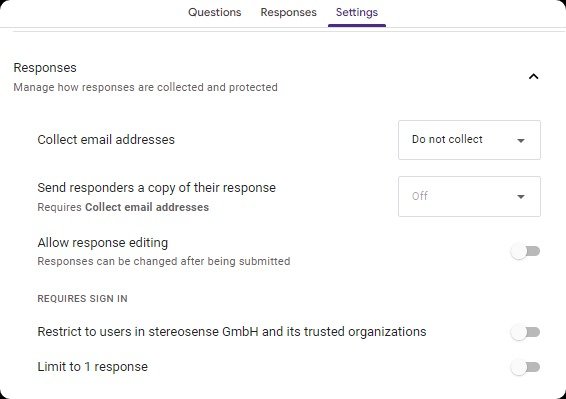
Make sure there is no other identifiable information requested in any part of your survey.
These settings are crucial for making Google Forms anonymous and ensuring that each response cannot be traced back to an individual. Following these steps will help ensure anonymity for all responses.
4. Test the Anonymous Google Survey
Before distributing your survey, it’s important to test it:
Share the form with a few trusted individuals or colleagues to fill it out. Ask them to consider both the content and the functionality of the form.
Ensure that their submissions are anonymous and that the form works as expected on different devices and browsers.
Make necessary adjustments based on the feedback to improve the survey’s clarity and functionality.
Thorough testing and improvements can help you receive more responses by making the survey easier and more accessible.
5. Distribute the Survey
Share your anonymous Google Forms link through the most effective channels available to your target audience. This could be via email, social media, or embedded in a website.
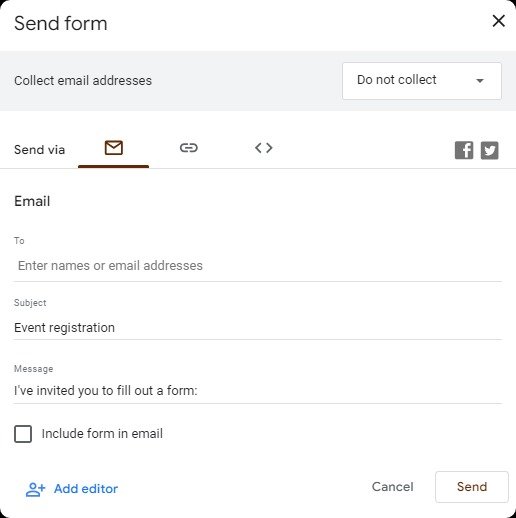
Google Form Survey Best Practices
If you want to create an anonymous Google Form survey that actually delivers results, let's dive into the essential practices that'll make your survey both effective and secure!
The first step is absolutely crucial you need to ensure your form is properly configured to protect participant privacy. The last thing you want is Google Forms accidentally gathering identifiable information from your participants. You'll also want to double check that none of your survey questions are asking for names, contact details, or any other information that could potentially identify your respondents.
Now, here's where the magic happens in creating an engaging survey experience! Use clear, straightforward language in your questions, trust me, confused participants won't give you the honest feedback you're looking for.
Before you launch that survey into the world, you absolutely must test it thoroughly! Fill out the form yourself and get a few colleagues to do the same, because you need to verify that responses truly remain anonymous and that everything functions exactly as intended.
Why is this step so critical? Because there's nothing worse than discovering issues after you've already collected responses from your target audience!
Create Responsive Anonymous Surveys with involve.me
While Google Forms is a widely used tool, it has some limitations that might lead users to seek alternatives. For example, Google Forms offers limited customization options, making it challenging for those who want to create visually distinct and branded surveys. Additionally, advanced features such as interactive elements, detailed analytics, and seamless integration with other platforms are often missing or require complex workarounds in Google Forms. These limitations can be significant for users who need more advanced features in their surveys.
But there’s good news!
If you are looking for a more feature rich alternative, involve.me is a standout option for creating anonymous surveys.
This platform is designed to create high converting surveys with advanced customization options. Its intuitive interface and comprehensive feature set make it an excellent choice for those seeking more than what Google Forms can provide. For instance:
Users can customize layouts, colors, fonts, and add branding elements to create a unique look and feel for their quizzes.

With advanced conditional logic, involve.me allows users to direct respondents through different paths based on their answers, creating personalized and dynamic quiz experiences.
involve.me integrates effortlessly with various platforms and tools, including CRM systems, email marketing services, and payment gateways, ensuring a more connected and streamlined workflow.
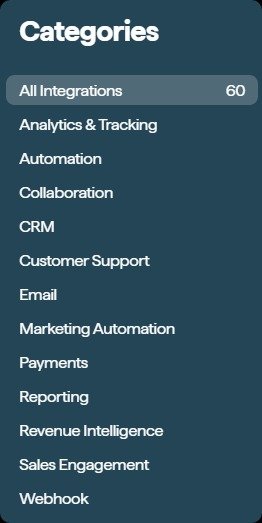
You can access detailed analytics and AI-generated reports for in-depth insights.
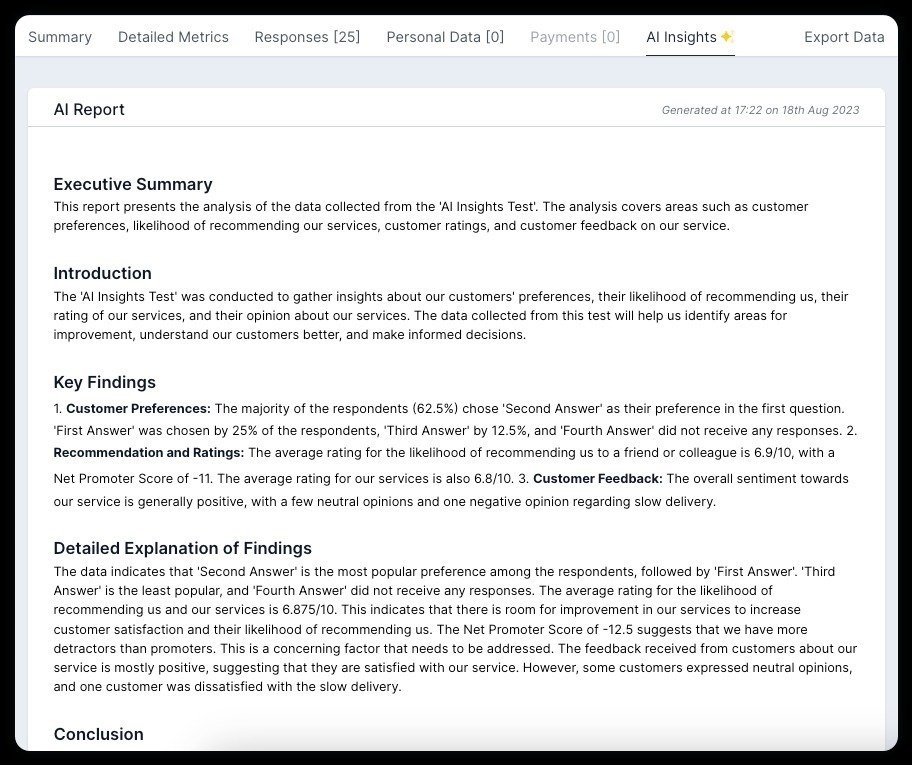
Here is an example of an anonymous feedback survey created using involve.me.
Final Words
Looking ahead, feedback tools are very important for decision making. Whether you opt for the simplicity of Google Forms or the advanced features of involve.me, ensure that your choice aligns with your goals and meets your audience's needs.
With involve.me you can create more engaging and insightful surveys. So, check out how this tool can change your approach to feedback and help you achieve your organizational goals. Start creating impactful anonymous surveys today with involve.me.
Create Your Own Online Surveys with involve.me
Get Started with 350+ Templates
Rate Your Tour Experience Survey Template
Feedback Survey Template
Market Research Survey for Finance Template
Monthly Delivery Cancellation Funnel Template
SaaS Cancellation Funnel Template
Big Five Personality Test Template

